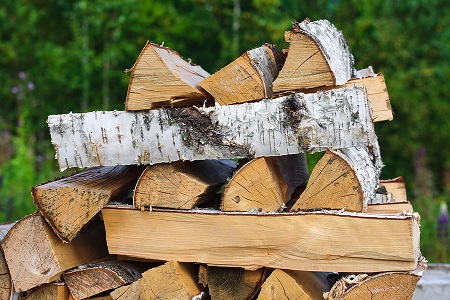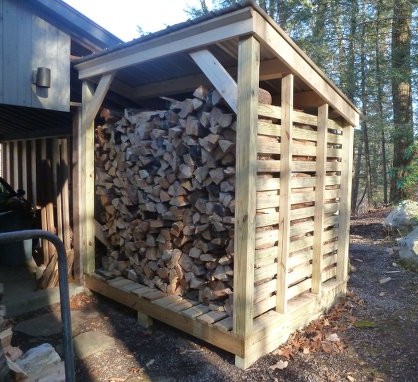Tips for Properly Storing Firewood Outside
 Your enjoyment of home fires begins with how firewood is cut and ultimately stored outside. Firewood needs to be properly seasoned, which means that it must go through a time of drying out. Depending on the type of wood you have and the conditions in which the wood is stored, it can take between six months to over a year for firewood to reach a desired moisture level of approximately 15% to 20% of its weight. The following are tips on how to properly store firewood outside.
Your enjoyment of home fires begins with how firewood is cut and ultimately stored outside. Firewood needs to be properly seasoned, which means that it must go through a time of drying out. Depending on the type of wood you have and the conditions in which the wood is stored, it can take between six months to over a year for firewood to reach a desired moisture level of approximately 15% to 20% of its weight. The following are tips on how to properly store firewood outside.
Cutting Firewood
The process of ensuring that you have optimal firewood begins with cutting it properly. The primary considerations are:
• Cutting the firewood to the desired length for your fireplace or wood stove.
• Ensuring that the logs can stand in order to make splitting easier.
• Another way to make splitting logs easier is to aim for hairline cracks in the logs when you swing the axe.
• Try to avoid knots when chopping wood because they change the direction of the wood grain, which makes splitting more difficult. The same is true of cutting branches.
• When splitting firewood, try not to strike on knots.
It would be better to err on the side of having shorter firewood as opposed to overly long logs. Fires are much more difficult to build and adjust when the logs are too long.
Firewood Storage Tips
The goal in storing firewood is to significantly reduce the amount of moisture in the wood. When firewood is not properly seasoned, the excess moisture creates smoky, inefficient fires that deposit significantly more creosote in the chimney flue. Highly flammable, tarlike creosote can lead to a hazardous chimney fire, which can destroy your chimney liner and result in a house fire.
A wood shed built for the purpose of firewood storage is the best way to dry out your logs. The following are some tips for building a wood shed that will help speed up the drying process:
• Allow for ventilation on every side and underneath the shed. The design of the shed should include maximum breathe-ability.
• Before beginning the building process of the wood shed, prevailing wind direction is an excellent consideration.
• When conditions are ideal, a wood shed is positioned in a way that also allows sunlight to significantly contribute to the drying process.
• The wood shed should allow logs to stay dry and get plenty of sunshine and ventilation, so that internal parts and ends of the logs dry out equally well.
• With smart design, wood sheds also add aesthetic value to your property.
A wood shed is the most effective approach to drying out wood, but it is not the only way. The following are tips for storing firewood when there is no wood shed:
• Keep the firewood off the ground by at least a few inches, which can be achieved using 4 x 4 runners. The goal is to ensure that the bottom row of your firewood isn’t too moist and therefore doesn’t rot. Stacking wood on gravel that is well-drained is also effective.
• Protect logs from rain and snow using tar paper and a fiberglass tarp, both of which are low-cost items.
Tips on Stacking Firewood
 When it comes to drying out firewood, location isn’t everything. The way you stack the wood can also help with the drying process. The following are tips on properly stacking firewood so that it dries out as quickly as possible:
When it comes to drying out firewood, location isn’t everything. The way you stack the wood can also help with the drying process. The following are tips on properly stacking firewood so that it dries out as quickly as possible:
• Stacking firewood too tightly extends the drying process. Leave air between logs, to allow for needed ventilation.
• Determine what the prevalent wind direction is and stack wood in long rows parallel to that wind flow. With a cover over the wood, a wind tunnel is created which blows between and across the logs.
• Create adequate space between rows of firewood. Six inches between rows is recommended.
Seasoned firewood will make a huge difference in the efficiency of the fires in your fireplace. Just be sure your chimney is inspected before a new wintry season, to ensure that the fireplace is ready for that first warm blaze.








